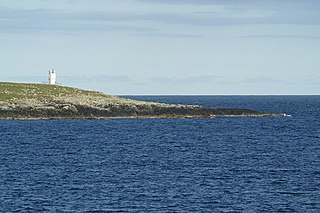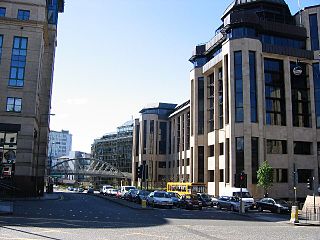History
Edinburgh University Data Library
EDINA has its origin in Edinburgh University Data Library, which was set up in 1983/4.
Researchers at the University of Edinburgh working with data from government surveys were looking to the university to provide university-wide provision for files that were too large to be stored on individual computing accounts. Arrangements for the University Library to purchase the small area statistics from the 1981 Population Census became the opportunity to petition action by the Program Library Unit (PLU) - which had both local responsibility for software provision and a national role to convert software for various computing platforms for UK universities. The PLU was also active in the design and implementation of the code for SASPAC, the program used widely for the extraction of census data, as part of a project led by David Rhind of Durham University.
In response, the Data Library was formed as a small group within the PLU led by Trevor Jones plus 1.5 staff: use of a programmer and a computing assistant. Peter Burnhill took over full-time responsibility in 1984. Early holdings were the 1981 UK population census, and research data from the universities of Edinburgh, Glasgow and Strathclyde.
Geographic information was a focus from the beginning, as the Data Library worked with researcher Jack Hotson to convert parish-based agricultural census data to grid square estimates. This allowed detailed visualisation of land use across the UK.
A collaboration with the Department of Geography saw the establishment of the Regional Research Laboratory for Scotland, focusing on quantitative techniques in the Social Sciences. Soon afterwards followed SALSER, a serials index bringing together libraries from the thirteen Scottish universities, the National Library of Scotland and the two major civic libraries of Edinburgh and Glasgow.
Links to the research community were cemented by the RAPID project, which linked research activity to the output of other work funded by the Economic and Social Research Council. Uniquely, RAPID included not only conventional monograph and journal publications, but also new types of research output such as software, datasets and learning materials. Reusable components for self-paced learning were to become an integral part of the department's role a few years later.
Launch of EDINA
Such projects built up a wealth of knowledge within the Data Library, and a breadth of subject which was to serve it well for the most important event in its history - the launch of the EDINA national data centre in 1995/96. Along with BIDS (acquired by ingenta in 1998) at the University of Bath and MIDAS (now Mimas) at the University of Manchester, the Edinburgh University Data Library was chosen as a JISC-funded centre for the provision of data services to the entire UK academic community. With the launch of EDINA, the Data Library had to be redefined to continue its local remit, distinct from the national services. Donald Morse took on the role of manager of the new Local Services team, and Joan Fairgrieve became the university's first Data Librarian.
EDINA's new services included bibliographic indexes such as BIOSIS and Ei Compendex, which helped with literature searches, and UKBORDERS, which filled a gap in census, political and postal boundary data. The Digimap service, launched in 2000, continues to provide access to a number of national geospatial data sets including Ordnance Survey GB maps and data, historical Ordnance Survey GB maps and maps and data of UK geology and hydrographic and other marine environments. SUNCAT, the Serials Union Catalogue for the UK research community, became a freely available EDINA service in 2006, and contained data from scores of UK research libraries, including the British Library and the National Libraries of Scotland and Wales. The catalogue was retired in 2019. [3]

Janet is a high-speed network for the UK research and education community provided by Jisc, a not-for-profit company set up to provide computing support for education. It serves 18 million users and is the busiest National Research and Education Network in Europe by volume of data carried. Previously, Janet was a private, UK-government funded organisation, which provided the JANET computer network and related collaborative services to UK research and education.
Three national rankings of universities in the United Kingdom are published annually – by The Complete University Guide, The Guardian and jointly by The Times and The Sunday Times. Rankings have also been produced in the past by The Daily Telegraph and Financial Times. UK Universities also rank highly in global university rankings with 8 UK Universities ranking in the top 100 of the three major global rankings - QS World University Rankings, Times Higher Education World University Rankings and Academic Ranking of World Universities.

Balta is an uninhabited island in Shetland, Scotland.

The School of Informatics is an academic unit of the University of Edinburgh, in Scotland, responsible for research, teaching, outreach and commercialisation in informatics. It was created in 1998 from the former department of artificial intelligence, the Centre for Cognitive Science and the department of computer science, along with the Artificial Intelligence Applications Institute (AIAI) and the Human Communication Research Centre.

Fettercairn is a small village in Aberdeenshire, Scotland, northwest of Laurencekirk in Aberdeenshire on the B966 from Edzell. Fettercairn is also reached via the Cairn O' Mount road (B974) from Deeside.
Copac was a union catalogue which provided free access to the merged online catalogues of many major research libraries and specialist libraries in the United Kingdom and Ireland, plus the British Library, the National Library of Scotland and the National Library of Wales. It had over 40 million records from around 90 libraries as of 2019, representing a wide range of materials across all subject areas. Copac was freely available to all, and was widely used, with users mainly coming from Higher Education institutions in the United Kingdom, but also worldwide. Copac was valued by users as a research tool.

Murrayfield is an affluent area to the west of Edinburgh city centre in Scotland. It is to the east of Corstorphine and north of Balgreen and Roseburn. The A8 road runs east–west through the south of the area. Murrayfield is often considered to include the smaller neighbouring areas of Ravelston and Roseburn.
Digital reference is a service by which a library reference service is conducted online, and the reference transaction is a computer-mediated communication. It is the remote, computer-mediated delivery of reference information provided by library professionals to users who cannot access or do not want face-to-face communication. Virtual reference service is most often an extension of a library's existing reference service program. The word "reference" in this context refers to the task of providing assistance to library users in finding information, answering questions, and otherwise fulfilling users’ information needs. Reference work often but not always involves using reference works, such as dictionaries, encyclopedias, etc. This form of reference work expands reference services from the physical reference desk to a "virtual" reference desk where the patron could be writing from home, work or a variety of other locations.
The National Oceanography Centre (NOC) is a marine science research and technology institution based on two sites in Southampton and Liverpool, England. It is the UK’s largest institution for integrated sea level science, coastal and deep ocean research and technology development. The Centre was established to promote cooperation with institutions across the UK marine science community, to better address key issues including sea level change, the ocean's role is climate change, computer simulation of the ocean's behaviour, and the long term monitoring and future of the Arctic Circle.

EPCC, formerly the Edinburgh Parallel Computing Centre, is a supercomputing centre based at the University of Edinburgh. Since its foundation in 1990, its stated mission has been to accelerate the effective exploitation of novel computing throughout industry, academia and commerce.

Edinburgh, the capital city of Scotland, is a powerhouse of the Scottish economy, as well as the wider UK economy. Edinburgh has been consistently one of the most prosperous parts of the country and has the strongest economy of any city in the UK outside London. Financial Times FDi Magazine has named Edinburgh as the "Best Large European City of the Future" and "Best Foreign Direct Investment Strategy " for 2012/13.
The Great Britain Historical GIS is a spatially enabled database that documents and visualises the changing human geography of the British Isles, although is primarily focussed on the subdivisions of the United Kingdom mainly over the 200 years since the first census in 1801. The project is currently based at the University of Portsmouth, and is the provider of the website A Vision of Britain through Time.
David William Rhind is a British geographer and expert on geographic information systems (GIS). He was Vice-Chancellor of City University, London, until July 2007.
The National E-Infrastructure Service (NES), formerly the National Grid Service, was an organisation for UK academics and researchers from 2004 through 2011. It was funded by two governmental bodies, Engineering and Physical Sciences Research Council (EPSRC) and the Joint Information Systems Committee (JISC).

The Ordnance Survey (OS) is the national mapping agency for Great Britain. The agency's name indicates its original military purpose, which was to map Scotland in the wake of the Jacobite rising of 1745. There was also a more general and nationwide need in light of the potential threat of invasion during the Napoleonic Wars. Since 1 April 2015, the Ordnance Survey has operated as Ordnance Survey Ltd, a government-owned company, 100% in public ownership. The Ordnance Survey Board remains accountable to the Secretary of State for Science, Innovation and Technology. It was also a member of the Public Data Group.

The Edinburgh Theological College was founded in 1810 to train Anglican clergy to serve in the Scottish Episcopal Church. In 1891 the college moved to Coates Hall in Rosebery Avenue where it gradually expanded to include residential accommodation and a library. The college’s academic hood was black lined with thistle green. The college closed in 1994 and the site is now used by St Mary's Music School.

Digimap is a web mapping and online data delivery service developed by the EDINA national data centre for UK academia. It offers a range of on-line mapping and data download facilities which provide maps and spatial data from Ordnance Survey, British Geological Survey, Landmark Information Group and OceanWise Ltd Ltd.,, Getmapping Ltd, the Environment Agency, OpenStreetMap, CollinsBartholomew Ltd, and various other sources.
The UK Data Service is the largest digital repository for quantitative and qualitative social science and humanities research data in the United Kingdom. The organisation is funded by the UK government through the Economic and Social Research Council and is led by the UK Data Archive at the University of Essex, in partnership with other universities.

The Survey of Scottish Witchcraft is an online database of witch trials in early modern Scotland, containing details of 3,837 accused gathered from contemporary court documents covering the period from 1563 until the repeal of the Scottish Witchcraft Act in 1736. The survey was made available online in 2003 after two years of work at the University of Edinburgh by Julian Goodare, now a professor of history at the University of Edinburgh, and Louise Yeoman, ex-curator at the National Library of Scotland, now a producer/presenter at BBC Radio Scotland, with assistance from researchers Lauren Martin and Joyce Miller, and Computing Services at the University of Edinburgh. The database is available for download from the website.












